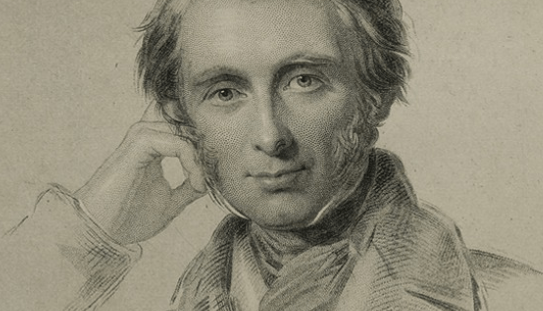John Ruskin, born on February 8, 1819, in London, England, was a polymath—writer, painter, art critic, and reformer. Raised by parents who instilled in him a deep passion for art, literature, and adventure, Ruskin’s life journey took him to the University of Oxford, where he founded the Company of St George, a drawing school aimed at social improvement and the promotion of ornamental arts. His rich background and exposure to socialist influences, particularly from the “Sheffield socialists,” greatly influenced his perspective on the relationship between art and society.
Ruskin’s Art and Morals:
Ruskin’s groundbreaking work, “Modern Painters” (1843), presented a postulate on the intertwining of art and morals, earning him a significant place among art critics of his time. Subsequent works like “The Seven Lamps of Architecture” (1849) and “The Stones of Venice” (1851-1853) delved into the moral, economic, and political dimensions of architecture. His keen interest in pre-Raphaelite painters further demonstrated his commitment to challenging the aesthetic stagnation and social consequences of the Industrial Revolution.
Ruskin’s Social Advocacy:
Ruskin’s ideas extended beyond the realm of art, as he denounced the negative impact of the Industrial Revolution on society. His work at Oxford took a stand against vivisection practices in the institution’s laboratories. After marrying Effie Gray, he continued his intellectual pursuits with publications such as “Conferences on Architecture and Painting” (1854) and “Conferences on the Political Economy of Art” (1858). The expansive “Fors Clavigera” (1871-1884) further showcased Ruskin’s commitment to social reform.
Ruskin’s Legacy and Influence:
Despite facing psychiatric challenges and a gradual detachment from reality, Ruskin’s impact on Victorian artists endured. Revered as a pioneer of neo-Gothic taste in England and a staunch supporter of pre-Raphaelitism, his works, including drawings of nature and Gothic cathedrals, are preserved at the University of Oxford.
FAQ:
Q: What were John Ruskin’s main contributions to art criticism?
A: Ruskin’s main contributions include his postulate on the relationship between art and morals in “Modern Painters” and his analyses of the moral, economic, and political aspects of architecture in works like “The Seven Lamps of Architecture” and “The Stones of Venice.”
Q: How did John Ruskin engage in social reform?
A: Ruskin actively engaged in social reform by founding the Company of St George, advocating against vivisection practices, and publishing works like “Fors Clavigera,” where he addressed broader issues related to society and its transformation.
Q: What is Ruskin’s legacy in the art world?
A: Ruskin’s legacy lies in his role as a champion of pre-Raphaelitism and a key figure in introducing neo-Gothic taste to England. His influence on Victorian artists and thinkers has left an indelible mark on the intersection of art, morality, and social reform.






Leave a Reply